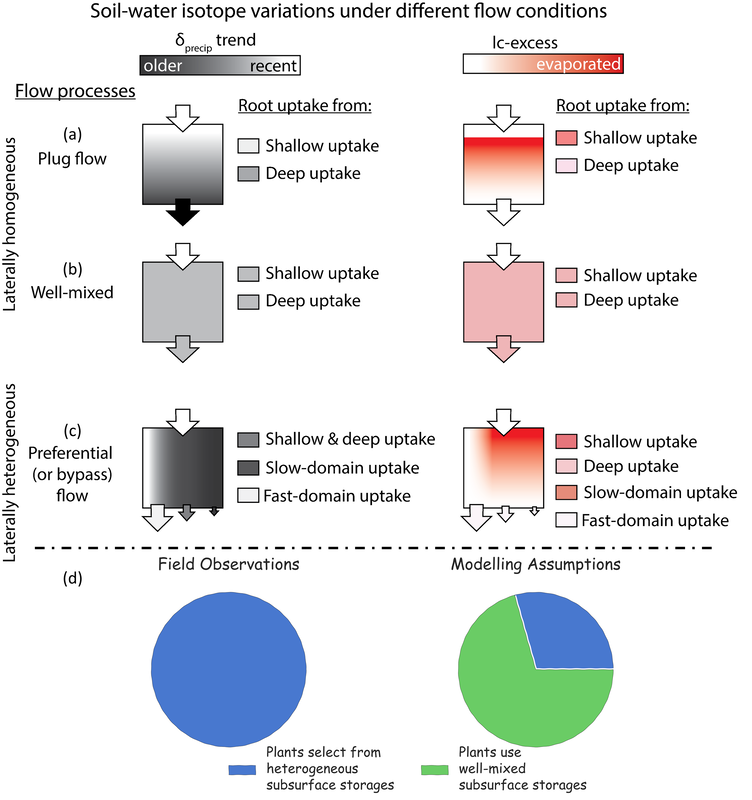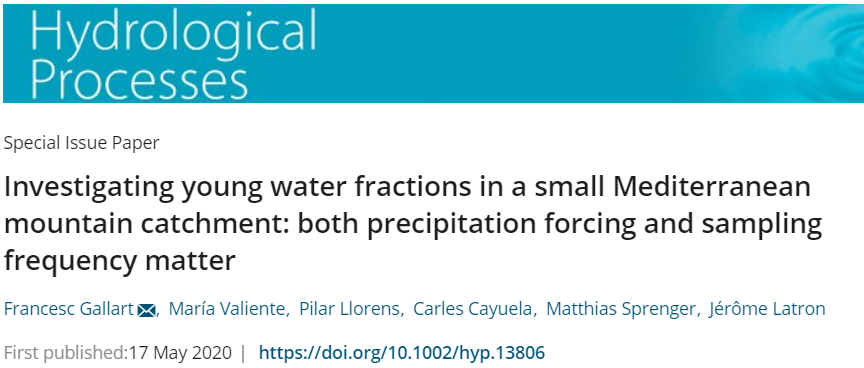|
Since I met Scott in November 2017, we discussed about the concept of "ecohydrologic separation", as introduced by Renée Brooks and colleagues in a Nature Geoscience paper in 2010. In early 2019, we decided to write our thoughts down in a commentary, which was now published in the journal Water Resources Research, titled: "What ecohydrologic separation is and where we can go with it". Our main messages are:
A) Isotope ratios of plant water should differ from water flowing in soils to streams & so we need to move beyond confirming this difference B) By focusing on dynamics of how water infiltrates into the subsurface & becomes available to plants we can better interpret past findings C) We discuss four aspects that should be considered:
0 Comments
A paper from the current collaboration with the Surface Hydrology and Erosion Research Group at IDAEA-CSIC, Barcelona, was recently published in a special issue on "Using water age to explore hydrological processes in contrasting environments" in Hydrological Processes. Under the lead of Francesc Gallart, we present a study on "Investigating young water fractions in a small Mediterranean mountain catchment: both precipitation forcing and sampling frequency matter" that highlights how sampling frequency and the rainfall dynamics impact estimations of the young (2-3 month) water fraction in the runoff. We found that this measure of young water fraction depends highly on the runoff dynamics with almost all runoff being young during the highest discharge events. Our findings, based on data from the Vallcebre Catchment in the Pyrenees, are for example relevant for inter-catchment comparisons based on estimated young water fractions, since the sampling design and the runoff responses should probably be considered in such approaches. A pre-print can be downloaded from researchgate and a final version can be requested via email if you do not have access to manuscripts published in Hydrological Processes.
|
Archiv
May 2022
Kategorien
All
|


 RSS Feed
RSS Feed
